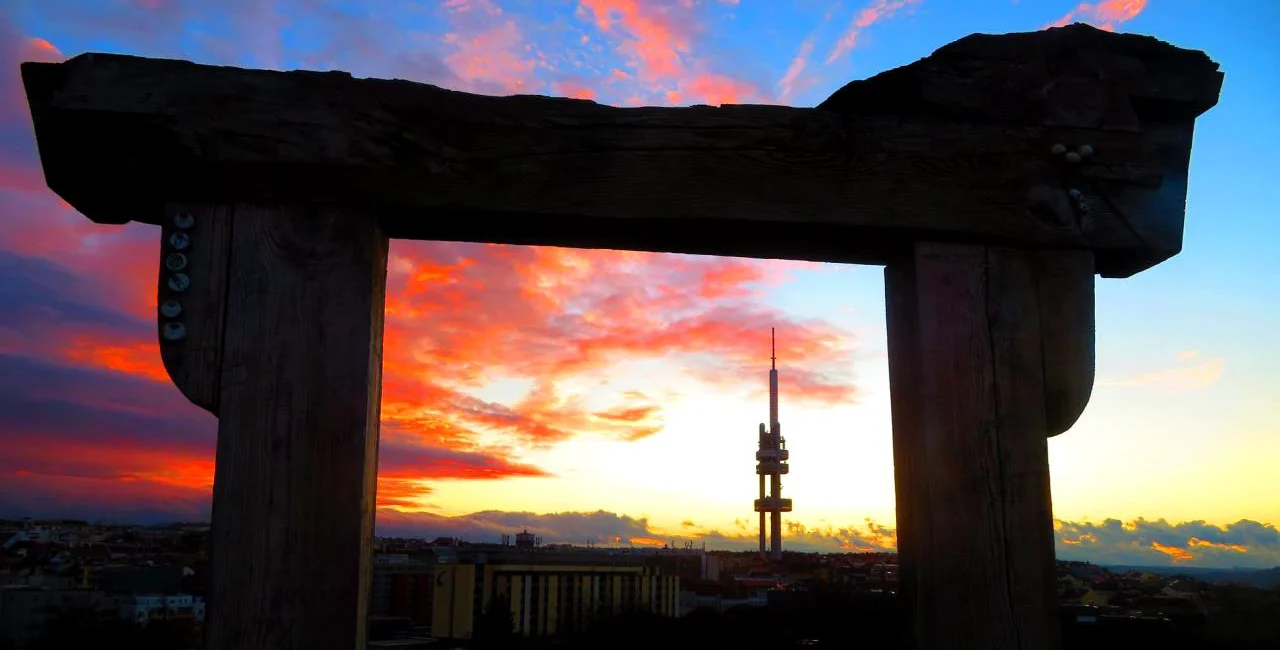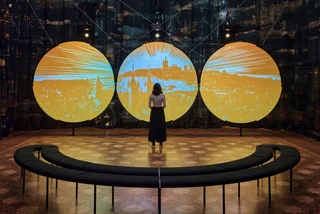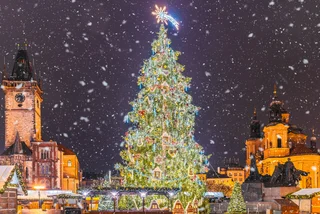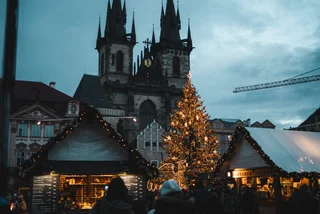The hilltop Parukářka park in Prague 3–Žižkov mainly attracts locals, but is worth seeking out. A little out of the way, it's next to the city’s largest cemetery, Olšanské hřbitovy, and a string of industrial and office buildings.
Its attractions are almost too many to list: three playgrounds, the city’s largest slide, table tennis, a dog obstacle course, some woods, some modern ruins, a mystical shrine, barbecue grills, a small pub, and a Cold War shelter.
Czech author Karel Čapek, who lived nearby, wrote a poetic description of the hill in 1925, though truth be told he was not a fan. The park seems to have improved greatly in the past 95 years.
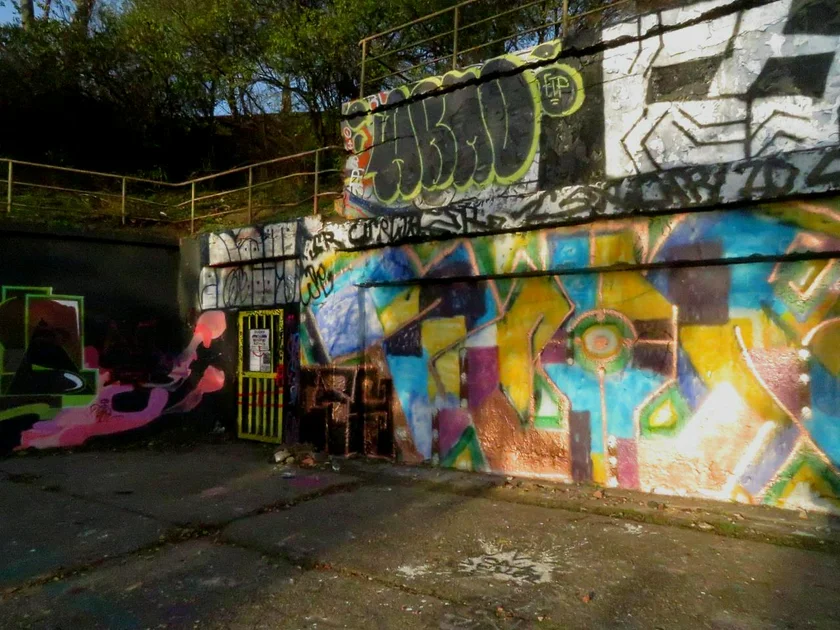
Approaching from Olšanské náměstí, you can enter the park either from stairs or via a bridge over Prokopova Street. The first point of interest is the entrance to Prague’s largest Cold War–era anti-nuclear shelter that runs underneath the hill. The entrances are covered in ever-changing graffiti.
The Bezovka complex was built in 1950–55 and originally was planned to keep 5,000 people alive for up to two weeks. It could produce its own water and electricity. One of its parts now has an exhibition about civil defense before 1989. Technically, about half of the complex is still considered operational and could house 2,500 people in an emergency.
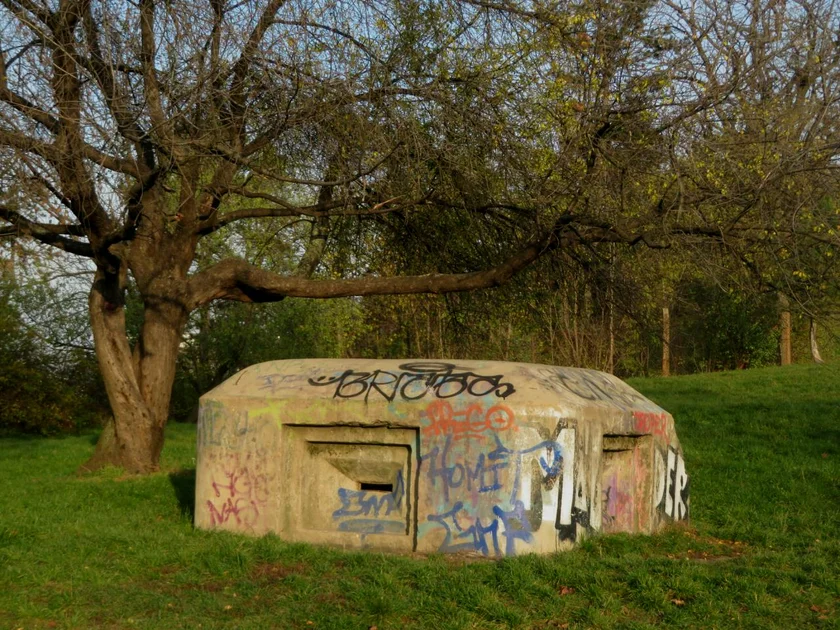
For those interested in such shelters, another one in Prague 2 at Folimanka is open for free, usually once a month under normal circumstances.
Paid tours of the Bezovka shelter can be arranged through a website, and sometimes the Prague 3 district opens it up on holidays for free but the number of spaces available is very limited. Concrete air vents run throughout the park and are used for ad-hoc seating by park visitors.
Directly above the shelter is a pub called Hospůdka Parukářka, though locals refer to it as Na Křížku. A wooden building from the 1990s has indoor seating, which normally lets it stay open all year. A grill operates next to the pub in the summer. Public benches serve as a beer garden.
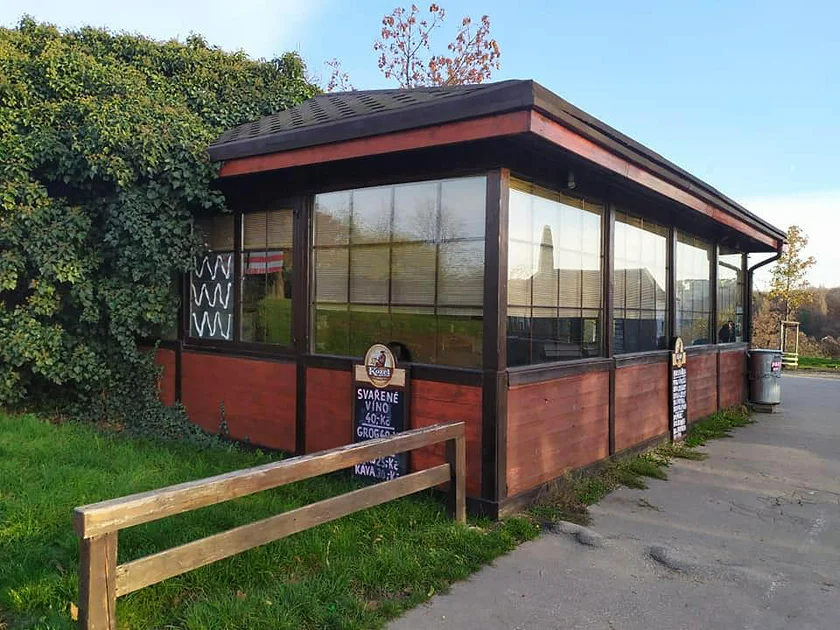
Conveniently near the pub is a fenced-off children’s playground that was extensively renovated in 2010 to bring it up to current expectations.
Between the pub and the playground is an information sign in Czech, one of three that make a short trail. They were installed in 2004 by the local club Klub přátel Žižkova (Friends of Žižkov).
In the fall, the hill’s flat lower area, just behind the pub, and the upper hilltop itself are ideal for flying kites, though if you examine the trees you can usually see a few stray victims caught in the branches.
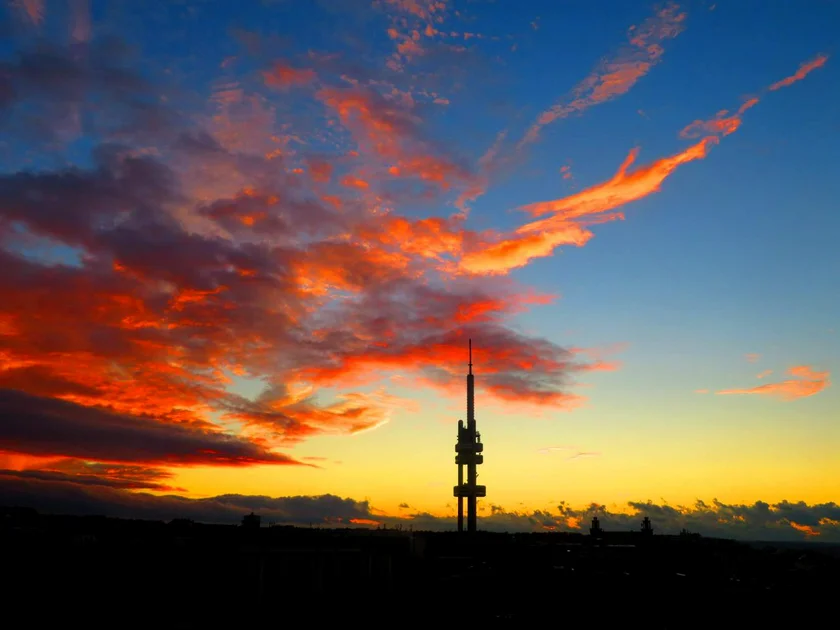
Also if you stand at the top of the hill, the sun sets near the Žižkov TV Tower throughout November and December, making for sometimes spectacular photos. Prague Castle and the National Memorial at Vítkov, with its large statue of Jan Žižka, can also be seen from some angles.
The hill top is marked with a wooden shrine-like portal and stools with large carved faces. The latter have cracked, taking on a weather-beaten aura. An information sign identifying the landmarks on the horizon is near the portal.
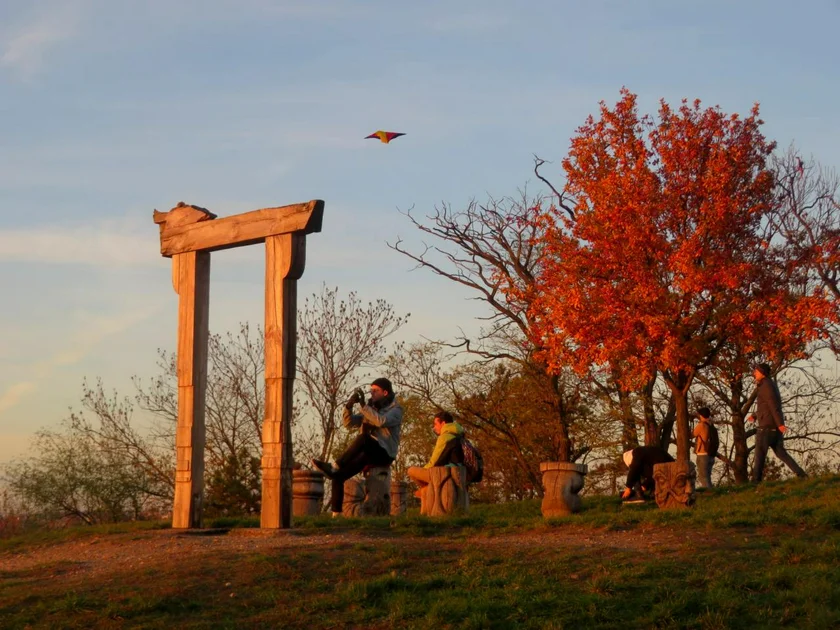
On the other side of the path from the shrine is a modern 150-centimeter-tall menhir, or standing stone, made of marble. A mystical symbol with a seven-pointed star is on its front. The stated intention is to bring harmony between civilization and nature, something similar to feng shui.
The menhir was designed by Slovenian sculptor Marek Pogačnik, and the non-profit organization Cultura Informa Bohemia sponsored it. The shrine and the menhir were installed in 2004.
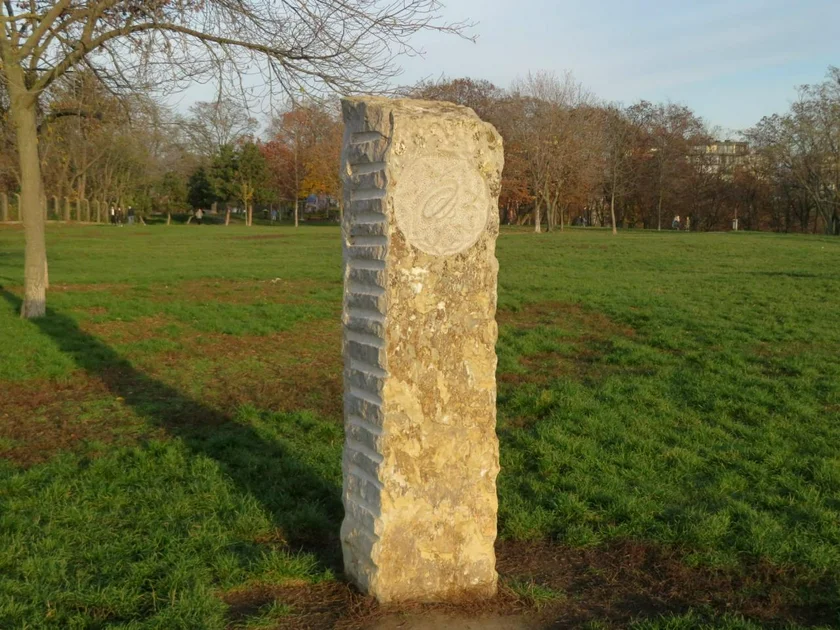
A bit beyond the hill’s peak is the largest children’s slide in Prague. It takes little ones down the side of the hill to another playground, this one built in 2011. Adults have to walk down on the stairs, as the slide has a section of pipe at the top limiting the size of those who can enter.
Deeper still on the flat upper part of the hill’s peak is a dog playground, but it is seldom used due to its rather hidden placement behind a low, graffiti-covered wall.
The first of two public grilling areas is next to the dog run. The grills themselves seem to have gone missing from this one, though. Legally, people are allowed to use the park’s grills but not to bring their own. Until the grills are returned this is just a picnic spot.
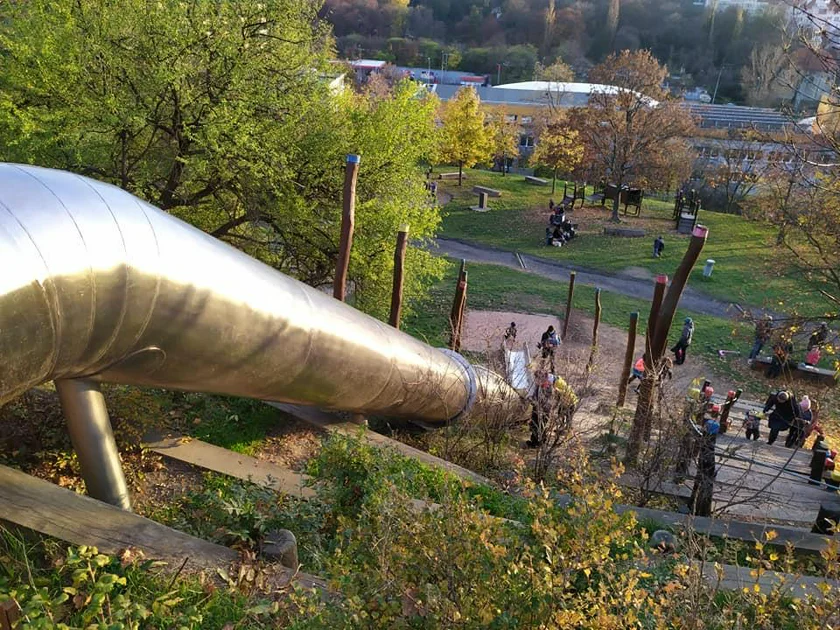
Following the upper path further brings you to the exit at Na Parukářce Street, but if you follow the path down and make a sharp turn, you enter the less-used lower section of the park. Here, at the corner, is the second grilling area with the grills intact .The lower path doubles back toward Olšanské náměstí.
The stone wall that runs parallel to the lower path is a remnant of the Sellier & Bellot ammunition factory and testing area. They owned part of the hill from 1826 onto first third of the 1900s.
The factory had an explosion in 1872 that killed 14 people. It completely shut down in 1935. Urban development was starting to surround it, making it an unsafe place for so much explosive power. The company name can be seen in large concrete letters above the entry to the now-residential building at Jeseniova 53. A chimney on the same street was also part of the complex.
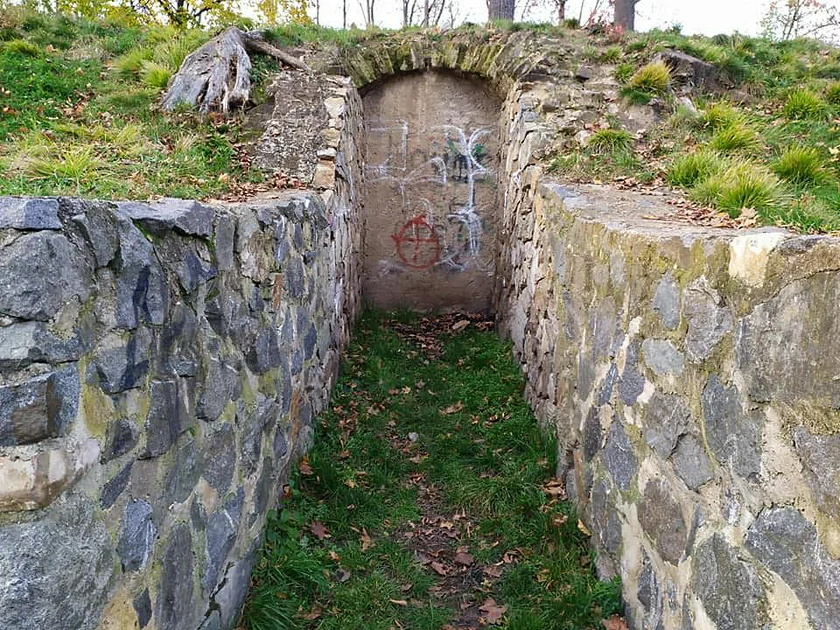
Sellier & Bellot is still in operation making ammunition, with headquarters now in Vlašim, Central Bohemia.
The last of three playgrounds, this one with two ping-pong tables for adults, is nestled in the woods along the lower path. A shooting club is also along this path in a rundown and forbidding-looking concrete building with barred windows. Going further eventually gets you to the playground with the bottom of the slide.
From along this route as you approach the main bunker entrance and pub you can see, just beyond the park’s border on Chelčického Street, the rural-style pink family house of early 20th century anarchist poet and journalist Stanislav Kostka Neumann, looking a bit out of place. It’s a protected landmark.
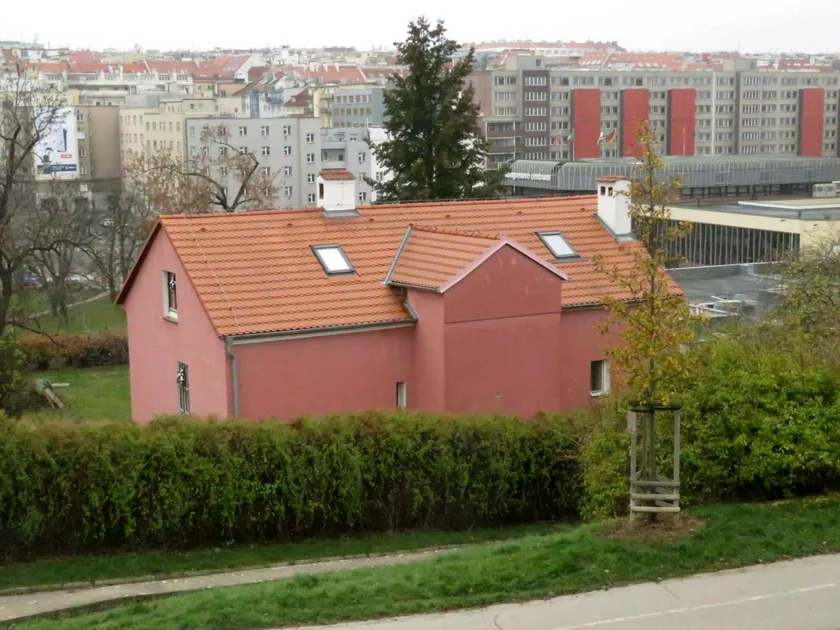
The hill itself is called Holy Cross (vrch svatého Kříže), and like many of Prague’s parks began its history as a vineyard established in the time of Emperor Charles IV. It was at that time called Hejtmánka.
Legend has it the name Holy Cross comes from the hill being an execution site, with a cross next to a gallows. Modern historians, though, dispute this and say the execution site was more likely someplace near what is now Příběnická and Řehořova streets.
A large wooden cross was placed the top of the hill sometime around 1822, but the exact date it vanished is uncertain.

Author Karel Čapek noted the absence of the cross in 1925, in a description reprinted in the neighborhood newspaper Kauza3. He wasn’t impressed: “There is only poor grass, hollowed and eaten slopes, and especially the Žižkov people. It’s a naked, sad, and steep graveyard, a bit of a quarry, a bit of a playground, and much else in the late hours,” he said, adding a poetic description of the view of the cemetery across the way and some notes on a slimy green pond that no longer exists.
He referred to Žižkov in general as “black, ragged and peeling.”
The popular name for the park, Parukářka, means wig maker. This refers to hair dresser Jan Hrabánek, who had a homestead and wig factory there starting in 1804. The homestead building is still located at Pod Parukářkou 4, but has lost much of its original character due to heavy-handed renovations.












 Reading time: 6 minutes
Reading time: 6 minutes 